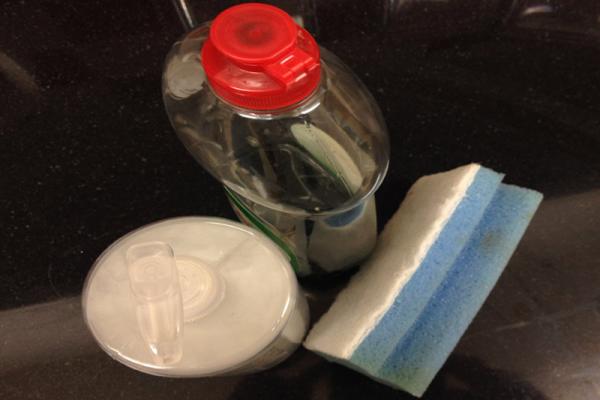GMB call on employers in London to examine cleaning products following health study

GMB call on the employers and government to examine cleaning products used by cleaners in London following study on health effects
No worker should be risking their health when they go to work and employers have a legal duty to assess risks, says GMB London
GMB, the union for cleaning staff, have called on employers and the government to examine the products used by cleaners, following a study of 6,000 people by a team from Norway's University of Bergen that found that regular exposure to cleaning products significantly effects lung function. It also found that women appeared to be more badly affected than men. [See notes to editors for BBC report and copy of the study]
Following the study, the team in Norway said cleaning chemicals were "unnecessary" and microfiber cloths and water were "enough for most purposes", with UK experts saying people should keep their homes and offices well ventilated and use liquid cleaners instead of sprays.
In Great Britain in 2016 there were 427,000 people employed as cleaners and at risk of these health effects. This figure includes employees involved in general interior cleaning of all types of buildings, exterior cleaning of buildings, specialised cleaning activities for buildings or other specialised cleaning activities, cleaning of industrial machinery, cleaning of the inside of road and sea tankers, disinfecting and extermination activities for buildings and industrial machinery, bottle cleaning, street sweeping, snow and ice removal.
In London there are 140,000 people employed as cleaners, with the majority employed in Tower Hamlets which has 8,000 cleaning employees. Camden, Hillingdon, Southwark and Westminster all have 6,000 cleaning employees working in the boroughs. With Bexley and Lambeth both employing 5,000.
The amount of cleaning staff employed by 33 London boroughs are set out in the table below. This is from a new study by GMB London Region of official data from the Office of National Statistics (ONS).
Business Register and Employment Survey 2016 - ONS Crown Copyright Reserved
|
Employment status |
Employees number |
|---|---|
|
Great Britain |
427,000 |
|
England |
387,000 |
|
London |
104,000 |
|
Tower Hamlets |
8,000 |
|
Camden |
6,000 |
|
Hillingdon |
6,000 |
|
Southwark |
6,000 |
|
Westminster |
6,000 |
|
Bexley |
5,000 |
|
Lambeth |
5,000 |
|
Bromley |
4,500 |
|
Merton |
4,500 |
|
Hounslow |
4,000 |
|
Sutton |
4,000 |
|
Enfield |
3,500 |
|
Kensington and Chelsea |
3,500 |
|
City of London |
3,000 |
|
Croydon |
3,000 |
|
Havering |
3,000 |
|
Lewisham |
3,000 |
|
Newham |
3,000 |
|
Wandsworth |
3,000 |
|
Islington |
2,500 |
|
Barnet |
2,000 |
|
Greenwich |
2,000 |
|
Hammersmith and Fulham |
2,000 |
|
Brent |
1,750 |
|
Waltham Forest |
1,750 |
|
Barking and Dagenham |
1,500 |
|
Hackney |
1,250 |
|
Redbridge |
1,250 |
|
Ealing |
1,000 |
|
Haringey |
1,000 |
|
Kingston upon Thames |
1,000 |
|
Harrow |
800 |
|
Richmond upon Thames |
700 |
“There are risks associated with using any chemical in the workplace and consideration has to be given to the type of chemical, the gender of the worker (especially important for pregnant workers), the amount of time exposed, whether any training is provided or protective clothing. Warren Kenny, GMB London Regional Secretary said:
“The health and safety of all workers is of paramount importance to GMB and we are aware that many workers face daily hazards. No worker should be risking their health when they go to work and employers have a legal duty to assess risks.
“There is evidence that workers are safer at work by being members of Trade Unions as we offer workers advice and a bigger say to their working environment as we work with employers to ensure proper safety reps and training is provided.”
ENDS
Contact: Shaun Graham 07885 706 556 or GMB Press Office 07970 114 762
Notes to Editors
1] BBC News - Cleaning products linked to poorer lung function (16 Feb 2018)
http://www.bbc.co.uk/news/health-43085674
2] Study - Cleaning at home and at work in relation to lung function decline and airway obstruction (16 February 2018)
http://www.thoracic.org/about/newsroom/press-releases/resources/women-cleaners-lung-function.pdf


